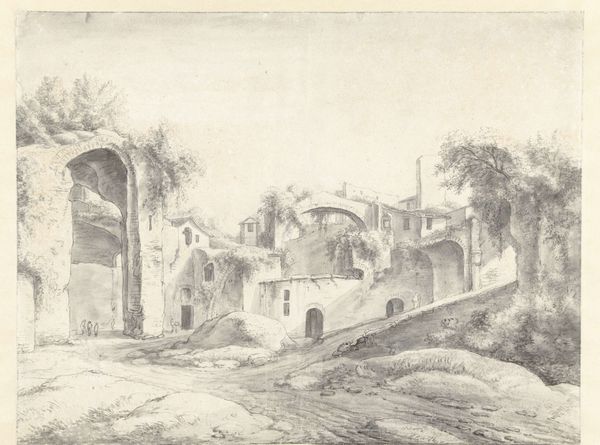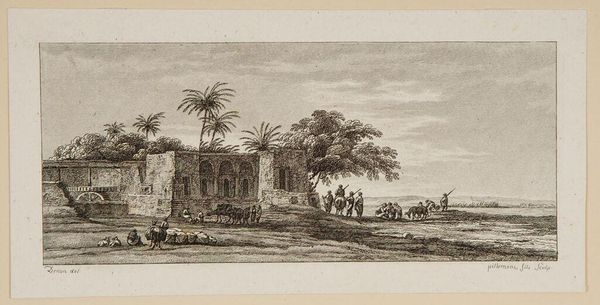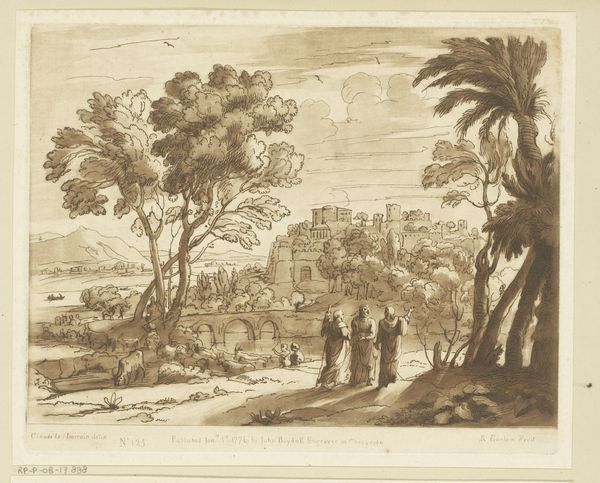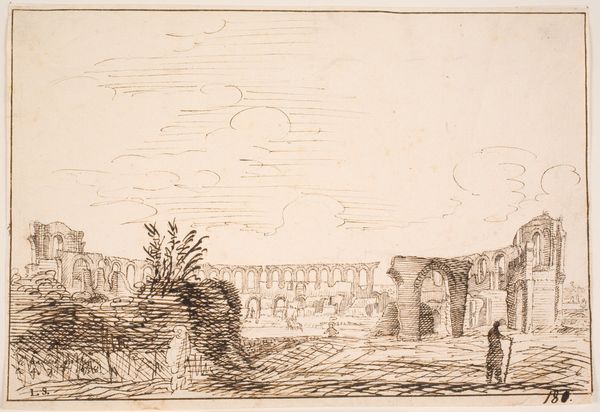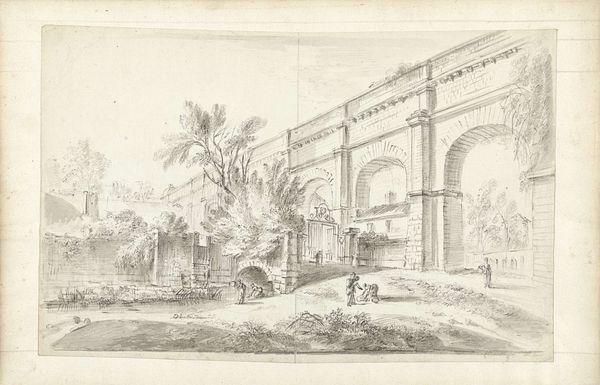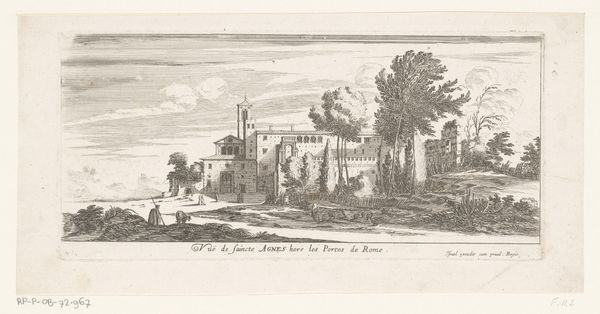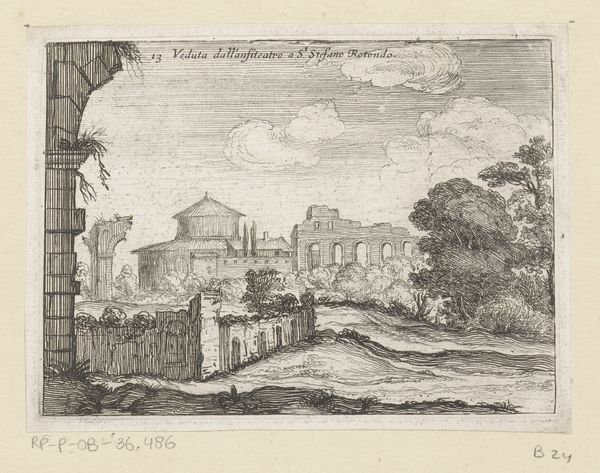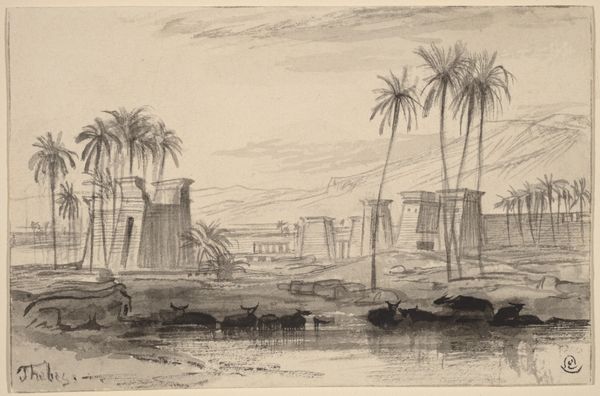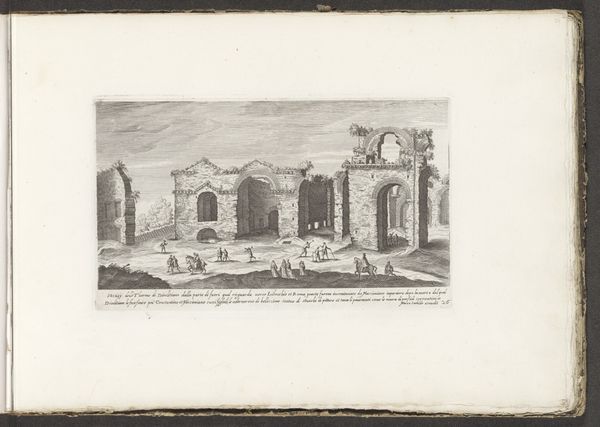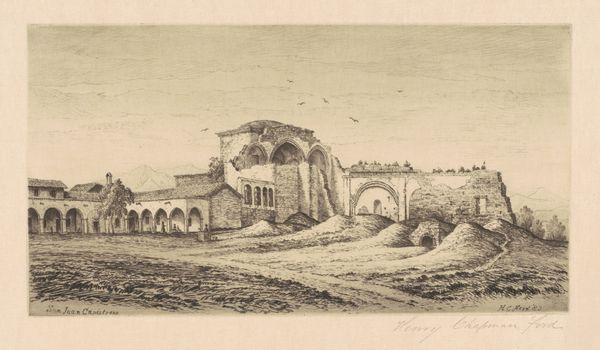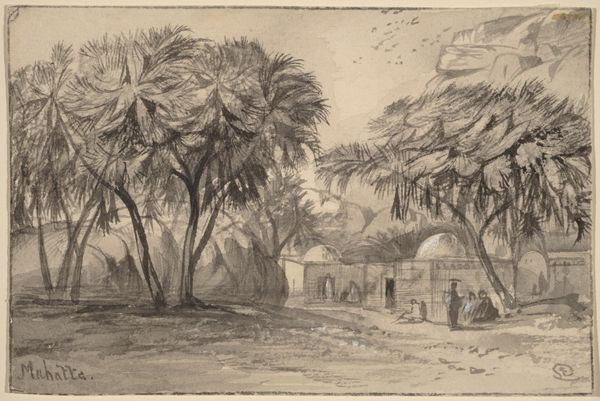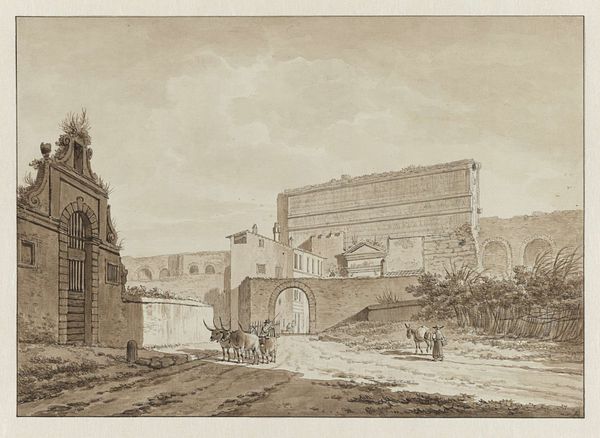
drawing, print, etching, pencil, pen
#
drawing
# print
#
pen sketch
#
etching
#
pencil sketch
#
landscape
#
pencil
#
pen
#
realism
Dimensions: plate: 17.46 × 32.54 cm (6 7/8 × 12 13/16 in.) sheet: 32.54 × 44.61 cm (12 13/16 × 17 9/16 in.)
Copyright: National Gallery of Art: CC0 1.0
Curator: Let's spend a moment with Henry Chapman Ford's etching, "Mission San Gabriel Arcángel," created in 1883. What's your immediate response? Editor: A feeling of stark openness, almost emptiness. The palm tree on the right looms, and the mission seems... exposed. Curator: Ford was clearly interested in capturing the visual reality, that much is obvious, however there is still an element of idealized beauty. What can you say about its rendering process, and materiality, to either accept this view or to nuance it a bit? Editor: Well, the print medium itself suggests a degree of reproduction, making this vista potentially widely disseminated. But also, note how meticulously Ford details the structure of the mission and the textures in the natural world surrounding it, with such linear intricacy. I wonder about the scale of production; each print requiring that intense, detailed work on the plate, mediating between mass dissemination and individual effort, not that different from architecture, in a way! Curator: It's interesting that you mention architecture; Ford’s choice of the mission subject aligns with a broader interest in historical preservation of certain symbols within American art. These missions weren’t simply buildings; they were imbued with complex meanings regarding faith, colonialism, and cultural exchange—do you see these elements rendered somehow, to transmit more than its immediate visual representation? Editor: Certainly. Look at how he frames the mission within this almost barren landscape. The starkness emphasizes its physical presence but perhaps also points to the displacement that underpinned the mission system. I see a material consequence—a very real effect on bodies, objects, space. It makes me wonder what Ford intended by isolating the mission in this way. What perspective does his representation promote or obscure? Curator: Indeed. These structures are loaded symbols. By representing it through printmaking, Ford creates copies that are both faithful and interpretations, adding more and more complexity on the meaning and usage of such symbol for his era. Thank you, as always. Editor: And thank you! These glimpses into process always make one appreciate the art object's loaded reality.
Comments
No comments
Be the first to comment and join the conversation on the ultimate creative platform.
